Nestled in the heart of eastern Oman lies a mesmerizing landscape that is home to one of the most breathtaking deserts in the world – the Wahiba Sands. This vast expanse of sand dunes covers an area of roughly 10,000 square kilometers or around 6,200 square miles. It’s not your average natural wonder, as it also offers rich lessons about Oman’s history and cultural identity.
The Wahiba Sands boasts an array of stunning landscapes, from seas of towering dunes to pristine wadis that offer a refreshing respite from the scorching sun. Also known as the Sharqiya Sands, the desert’s unique topography and rich cultural heritage make it a fascinating destination that offers a unique adventure.

From dune bashing to camel riding, exploring the Wahiba Sands is an experience like no other. Huge thanks to my friends at Oman Travel for taking me into this awe-inspiring desert and allowing me to experience its wonders and culture. So, buckle up and get ready for an unforgettable journey through the heart of Oman’s stunning Wahiba Sands.
The Bedouins who live in the Wahiba Sands have a unique lifestyle that blends tradition and modernity. Many of them work in cities and own two homes, but their traditional homes in the desert are spacious and equipped with modern amenities, including strong blinds to protect from sandstorms.

Camels are a significant part of their lives, with many families breeding race camels and selling them for high prices. Despite the challenges of living in the desert, such as encountering dangerous reptiles and insects and sandstorms, the Bedouins have developed a mindset to prepare for and accept nature’s fury. They live in and around desert camps, preserving their culture and way of life.
After exploring Muscat, the national capital, for several days, I headed out to the Wahiba Sands with my guides Ahmed and Ameer. The 24 hours I spent in the desert was the highlight of a magical 10-day trip through the country.
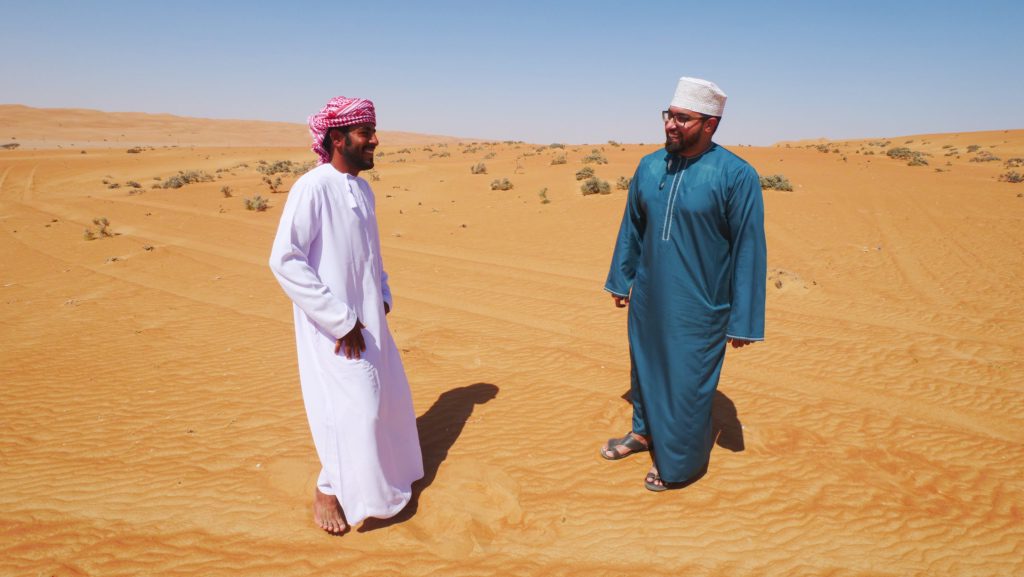
We had a fantastic Bedouin guide, who taught me a lot and cooked us some drool-worthy food. But more on that later, because before you travel to the Wahiba Sands, there are some things you need to know.
Part of the way through our drive through the Wahiba Sands, our Bedouin guide joined us and drove us to our campsite. It consisted of six tents, including one with three beds, a kitchen, and a bathroom area. There was also a covered area where we could gather to eat and relax during the hottest part of the day.
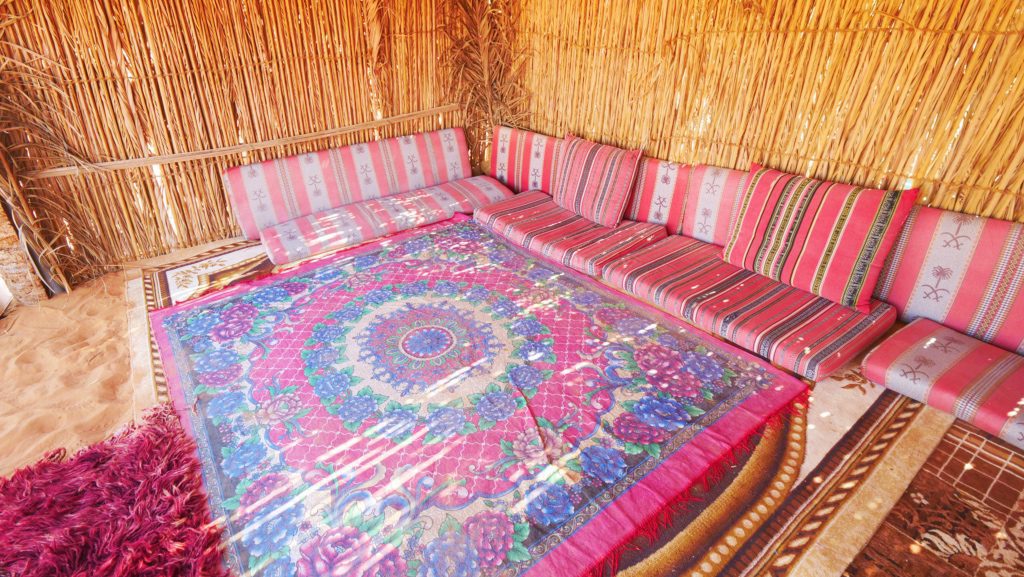
When we arrived, apples, oranges, and water were there waiting for us. But it was then time to prepare lunch. Our guide, a native who had attended college in Sur, built us a fire.
I enjoyed two fantastic meals during my time in the Wahiba Sands. My first was kabsa, a traditional Bedouin dish that combines basmati rice with chicken and vegetables. To make it, our guide boiled the chicken in a pot over the fire and then added red onion, garlic, tomatoes, potatoes, dried lemon, and an array of spices.
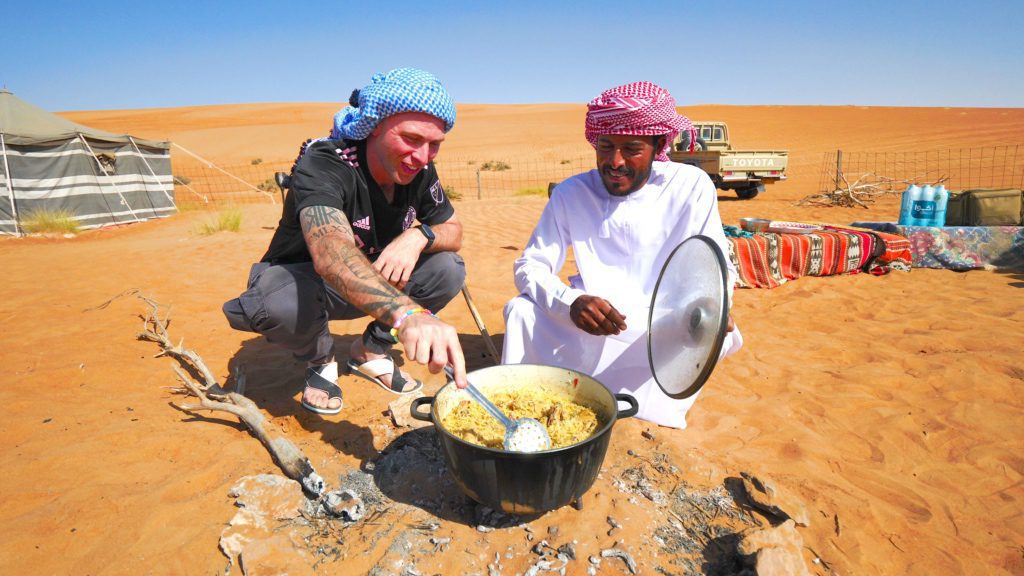
While it cooked, we ate some sweet, mashed dates with a dash of cumin. We enjoyed them with some fragrant Arabic coffee with saffron and cardamom.
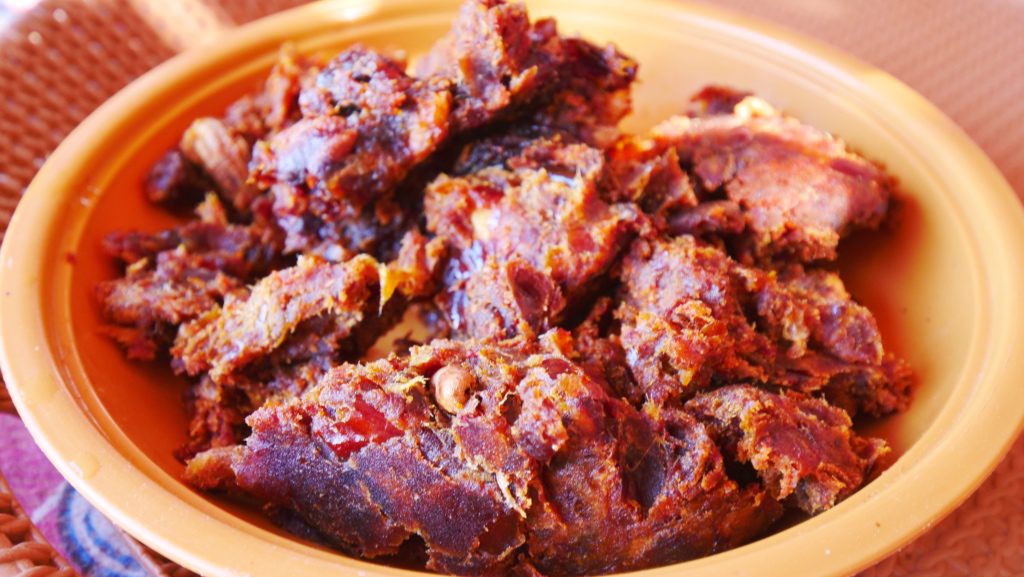
Like most Middle Eastern and South Asian countries, rice dishes are meant to be eaten with your hands rather than a fork or a spoon. The kabsa is no different. The technique to eating it is similar to the one I learned in India–scoop up the rice, allowing it to rest on your middle, ring, and pinky fingers. Then, use your thumb to push it into your mouth!
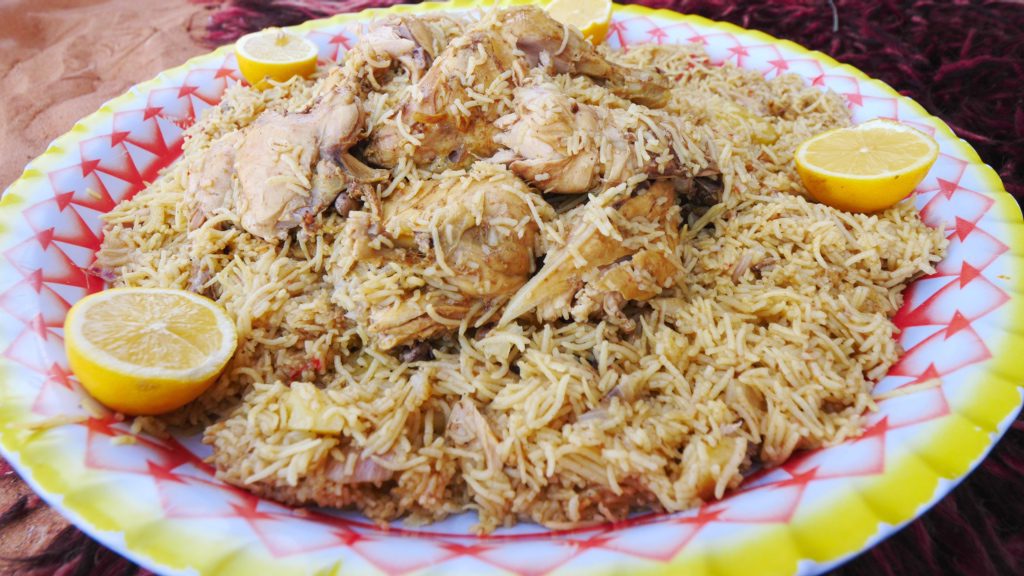
The kabsa was hearty, tender, and flavorful despite the use of no oil. The spices, lemon, and chicken gave it a tangy, herbaceous flavor.
One of the most popular activities in the Middle East is dune bashing in a four-wheel drive vehicle. However, a more traditional form of traversing the sand dunes is by riding a camel. This is an activity that has been practiced for centuries, allowing riders to experience the desert environment in a unique and thrilling way.
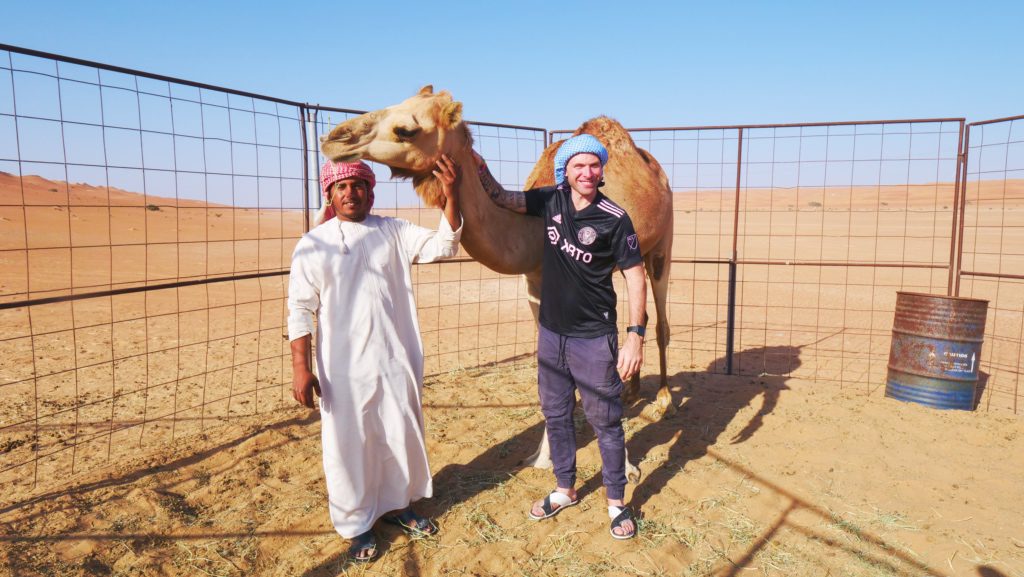
But I wouldn’t be riding these camels, just meeting and observing them. The Bedouins kept them roughly a five-minute drive from our camp. Some of these camels are for racing, while others are just for show. There were also some mothers with their babies, so I made sure to keep my distance. An angry or annoyed camel is nothing nice!
Following that, we went on a thrilling ride through the dunes of the Wahiba Sands! I had the opportunity to experience this before in Qatar and it was an enjoyable adventure! Going up and down the dunes is always a wild ride, similar to a roller coaster. I don’t recommend doing it right after eating or if you have a sensitive stomach, though!
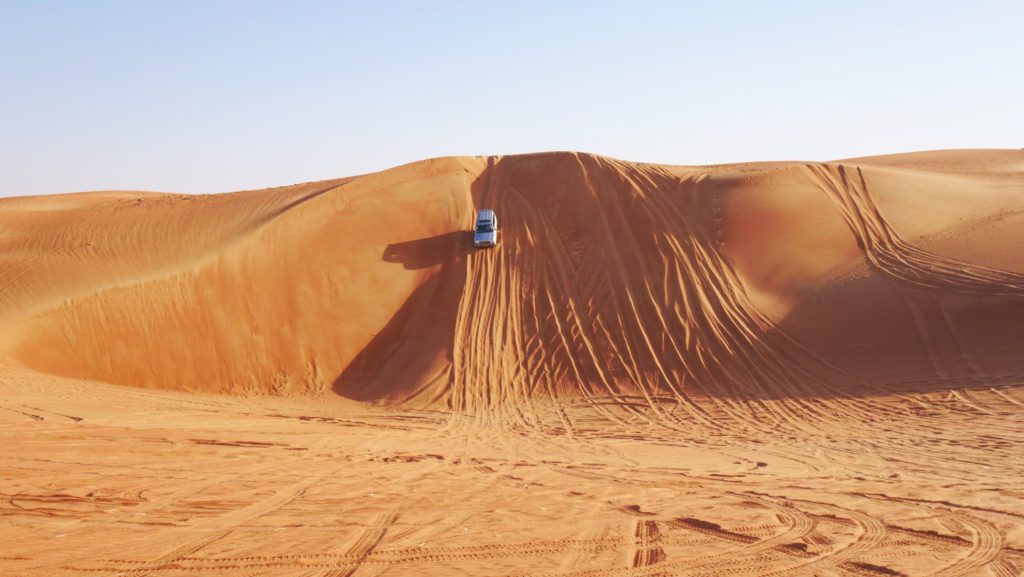
Once we had returned to the camp, we ventured back out into the desert. The temperature had significantly diminished since the sun had begun to set, so we could actually go out into the sands without any shoes on.
For dinner, we enjoyed an incredible lamb under the stunning night sky of the Wahiba Sands. First, our hosts placed the lamb meat in a pot with water and a variety of spices, including cardamom, cloves, and black pepper. Then, they dug a hole in the sand and put a stone inside before building a fire on top.
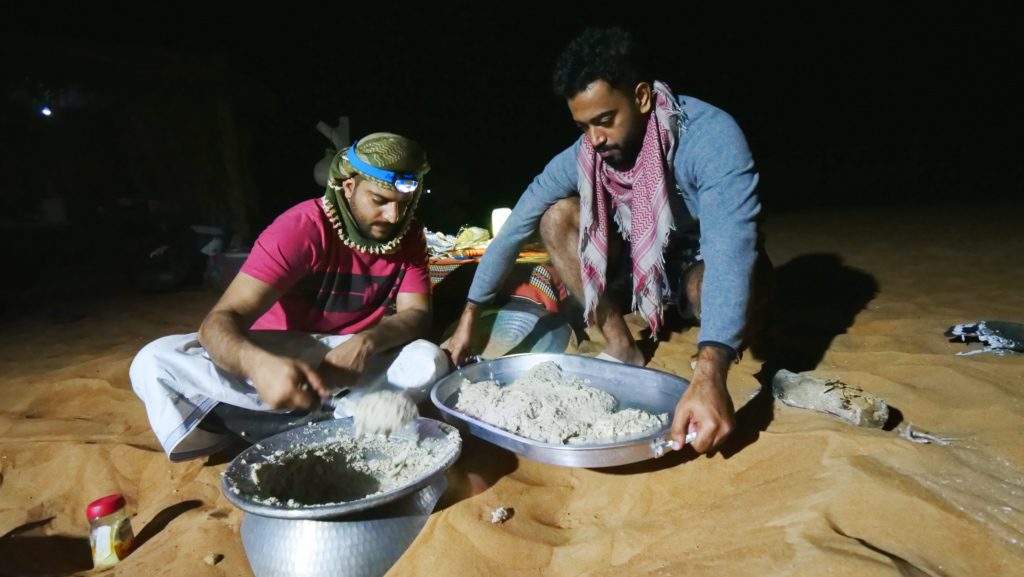
They used a combination of tamarind sauce, garlic, red chili, black pepper, salt, and vinegar to marinate some chicken legs. Then, they mixed some cooked rice with the lamb and cooked it over the fire.
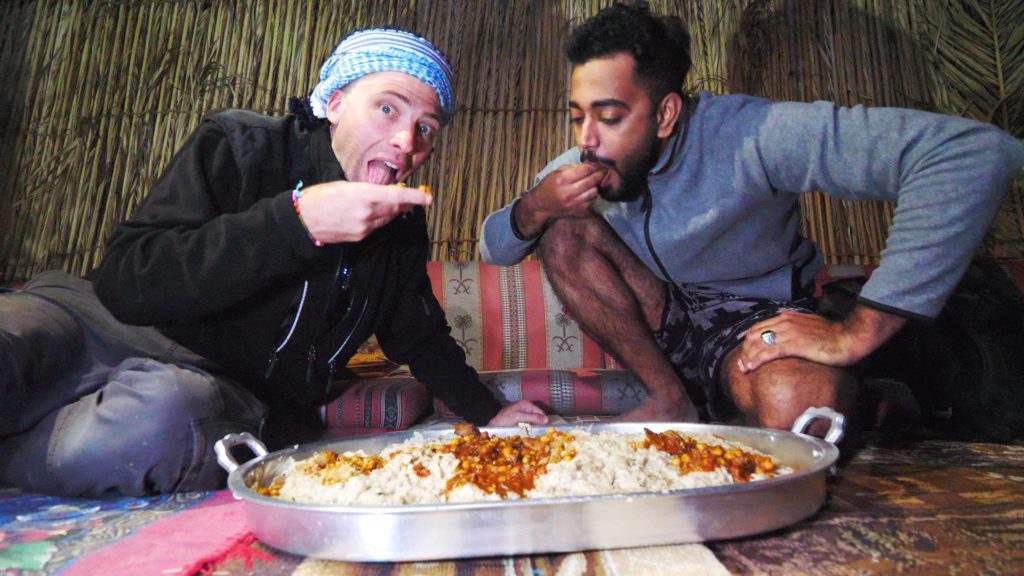
The chicken was cooked to perfection, with a tantalizing blend of spices. They also mashed the rice until it reached a consistency similar to mashed potatoes. The dish is called orsia and is typically eaten during Eid. They also added a rich liver curry, which made for an earthy, creamy and tasty meal that filled my belly and had me craving more!
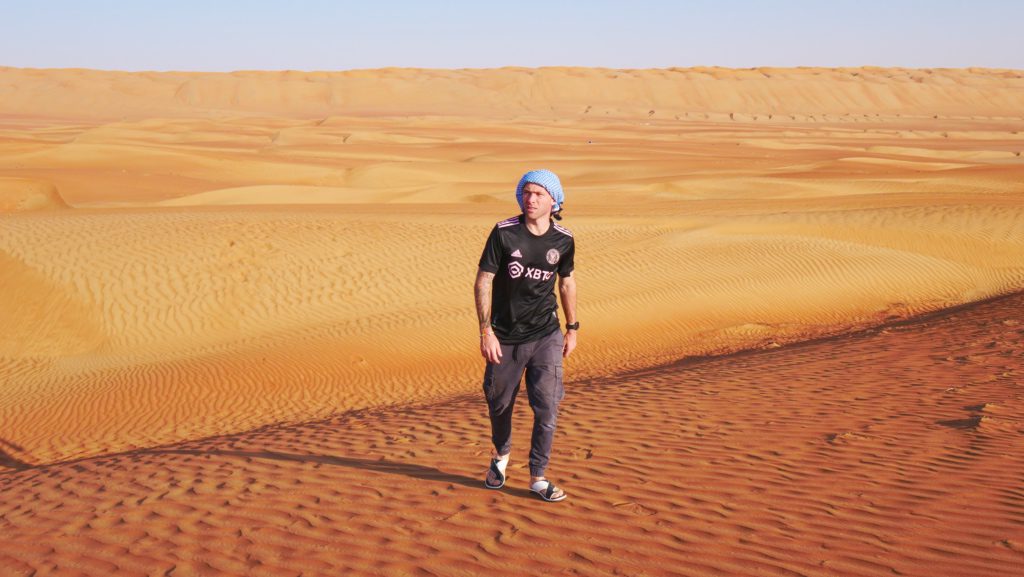
When you visit the Wahiba Sands, you can’t help but fall in love with it. Its wonderful mix of culture, history, and natural beauty is a combination you can’t beat. Once you add in the friendly and welcoming locals and the thrilling adventures, it’s easy to see why this is among the top travel experiences in Oman. I highly recommend it, so book a trip to Oman today to have your own Wahiba Sands experience!
Counter
101 Countries • 1432 Cities